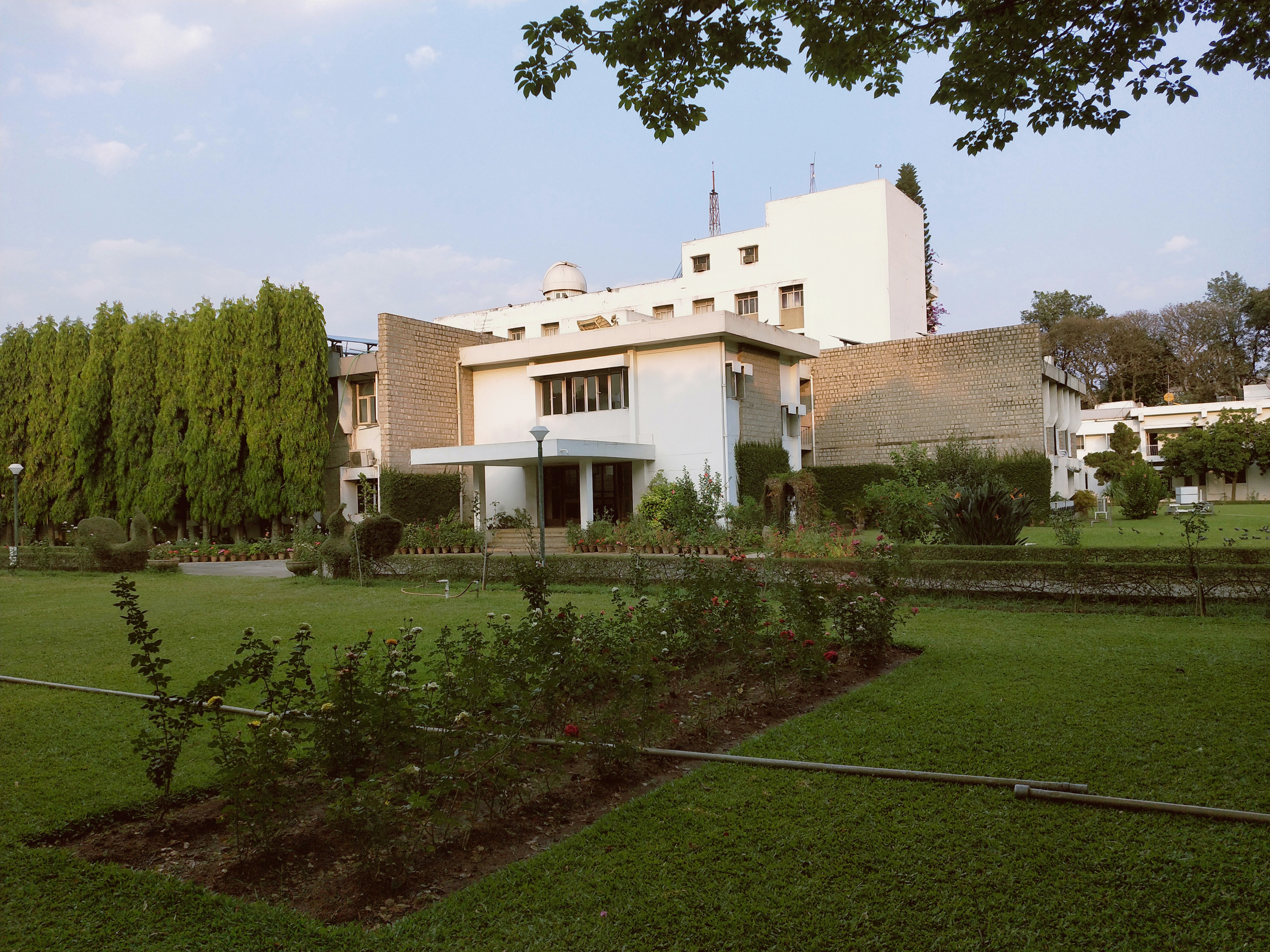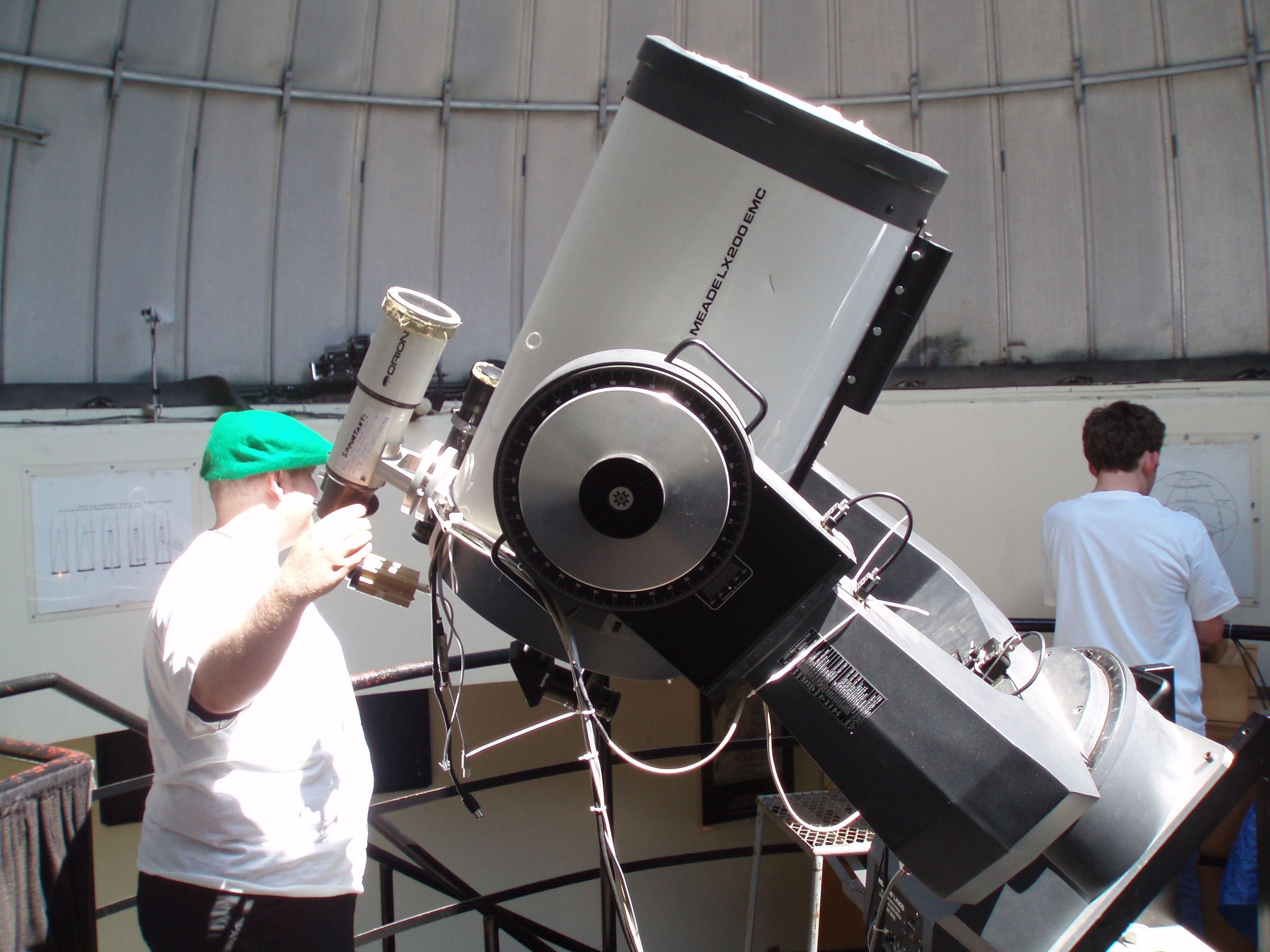|
Madhava Observatory
Madhava Observatory is an observatory set up by the University of Calicut in 2005 in association with the Indian Institute of Astrophysics (IIA), Bangalore. It is the largest observatory at the university level in India. The hemispherical dome has a slit opening, a wheel assembly and a 14-inch Meade (Cassegrain) telescope. The observatory is used by the faculty and staff of the university for study and research purposes. The observatory has also an 18-inch NGT reflector telescope gifted by IIAP, Bangalore, a dedicated computer facility for data collection and analysis. The observatory is named after Madhava of Sangamagrama (c. 1340 – c. 1425), who is considered one of the greatest mathematician-astronomers of the Middle Ages and was the founder of the Kerala school of astronomy and mathematics The Kerala school of astronomy and mathematics or the Kerala school was a school of Indian mathematics, mathematics and Indian astronomy, astronomy founded by Madhava of Sanga ... [...More Info...] [...Related Items...] OR: [Wikipedia] [Google] [Baidu] |
Madhava Observatory At Calicut University
Mādhava means Lord Krishna an incarnation of Vishnu. It may also refer to: *a Sanskrit patronymic, "descendant of Madhu (a man of the Yadu tribe)". ** especially of Krishna, see Madhava (Vishnu) *** an icon of Krishna ** Madhava of Sangamagrama, fourteenth-century Indian mathematician ** Madhvacharya, philosopher in the Vaishnavism tradition ** Madhava Vidyaranya, Advaita saint and brother of Sayana ** Venkata Madhava, 10th to 12th century commentator of the Rigveda ** Madhavdeva, 16th-century proponent of Ekasarana dharma, neo-Vaishnavism of Assam *relating to springtime; the first month of spring, see Chaitra *a name of Krishna *Madhava or Madhava-kara, an Indian physician of the 7th or early 8th century See also *Madhavan (other) *Madhavi (other) Madhavi may refer to: * Goddess Radha, consort of Lord Krishna *Goddess Lakshmi, consort of Lord Vishnu * Madhavi (''Silappatikaram''), a character in the ancient Tamil epic ''Cilapathikaram'' * Madhavi (actress), ... [...More Info...] [...Related Items...] OR: [Wikipedia] [Google] [Baidu] |
Observatory
An observatory is a location used for observing terrestrial, marine, or celestial events. Astronomy, climatology/meteorology, geophysical, oceanography and volcanology are examples of disciplines for which observatories have been constructed. Historically, observatories were as simple as containing an astronomical sextant (for measuring the distance between stars) or Stonehenge (which has some alignments on astronomical phenomena). Astronomical observatories Astronomical observatories are mainly divided into four categories: space-based, airborne, ground-based, and underground-based. Ground-based observatories Ground-based observatories, located on the surface of Earth, are used to make observations in the radio and visible light portions of the electromagnetic spectrum. Most optical telescopes are housed within a dome or similar structure, to protect the delicate instruments from the elements. Telescope domes have a slit or other opening in the roof that can be opened during ... [...More Info...] [...Related Items...] OR: [Wikipedia] [Google] [Baidu] |
University Of Calicut
The University of Calicut, also known as Calicut University, is a State ownership, state-run public university headquartered at Tenhipalam in Malappuram district of the state of Kerala, India. Established in 1968, it is the first university to be set up in northern Kerala. The university is coordinated by the University Grants Commission (India), University Grants Commission (re-accredited by NAAC with 'A+' grade). Calicut University, created by bifurcating Kerala University, is the second university to be set up in Kerala. M. M. Gani, 1969–75, was the first vice-chancellor of the university. Its primary catchment area is the northern districts of Kerala. Calicut University has nine schools and 34 departments. As of 2018-19 Calicut University had 301 undergraduate students and 1799 post-graduate students. The number of full-time doctoral students was 581. The university was ranked 54th among Indian universities by the National Institutional Ranking Framework (NIRF) in 2020 and ... [...More Info...] [...Related Items...] OR: [Wikipedia] [Google] [Baidu] |
Indian Institute Of Astrophysics
The Indian Institute of Astrophysics (IIA), with its headquarters in Bengaluru,is an autonomous Research Institute wholly financed by the department of Science and Technology, Government of India. IIA conducts research primarily in the areas of astronomy, astrophysics and related fields. The institute has a network of laboratories and observatories in India, including Kodaikanal (the Kodaikanal Solar Observatory), Kavalur (the Vainu Bappu Observatory), Gauribidanur (the Gauribidanur Radio Observatory), Hanle (the Indian Astronomical Observatory) and Hosakote. IIA contributed to Astrosat, India's first dedicated multi-wavelength space observatory. The Astrosat project is a collaborative effort of many different research institutions from India. The institute led the development of Ultra-Violet Imaging Telescope (UVIT). Areas of research Researchers at IIA work on a diverse set of topics related to Astronomy and Astrophysics. However, the research can be broadly classified und ... [...More Info...] [...Related Items...] OR: [Wikipedia] [Google] [Baidu] |
Bangalore
Bangalore (), officially Bengaluru (), is the capital and largest city of the Indian state of Karnataka. It has a population of more than and a metropolitan population of around , making it the third most populous city and fifth most populous urban agglomeration in India, as well as the largest city in South India, and the 27th largest city in the world. Located on the Deccan Plateau, at a height of over above sea level, Bangalore has a pleasant climate throughout the year, with its parks and green spaces earning it the reputation as the "Garden City" of India. Its elevation is the highest among the major cities of India. An aerospace, heavy engineering and electronics hub since the 1960s, Bangalore is widely regarded as the "Silicon Valley of India" because of its role as the nation's leading information technology (IT) exporter.——— In the Ease of Living Index 2020 (published by the Ministry of Housing and Urban Affairs), it was ranked the most livable Indian ... [...More Info...] [...Related Items...] OR: [Wikipedia] [Google] [Baidu] |
India
India, officially the Republic of India (Hindi: ), is a country in South Asia. It is the seventh-largest country by area, the second-most populous country, and the most populous democracy in the world. Bounded by the Indian Ocean on the south, the Arabian Sea on the southwest, and the Bay of Bengal on the southeast, it shares land borders with Pakistan to the west; China, Nepal, and Bhutan to the north; and Bangladesh and Myanmar to the east. In the Indian Ocean, India is in the vicinity of Sri Lanka and the Maldives; its Andaman and Nicobar Islands share a maritime border with Thailand, Myanmar, and Indonesia. Modern humans arrived on the Indian subcontinent from Africa no later than 55,000 years ago., "Y-Chromosome and Mt-DNA data support the colonization of South Asia by modern humans originating in Africa. ... Coalescence dates for most non-European populations average to between 73–55 ka.", "Modern human beings—''Homo sapiens''—originated in Africa. Then, int ... [...More Info...] [...Related Items...] OR: [Wikipedia] [Google] [Baidu] |
IUCAA
The Inter-University Centre for Astronomy and Astrophysics (IUCAA) is an autonomous institution set up by the University Grants Commission of India to promote nucleation and growth of active groups in astronomy and astrophysics in Indian universities. IUCAA is located in the University of Pune campus next to the National Centre for Radio Astrophysics, which operates the Giant Metrewave Radio Telescope. IUCAA has a campus designed by Indian architect Charles Correa. History After the founding of the Giant Metrewave Radio Telescope (GMRT) by Prof. Govind Swarup, a common research facility for astronomy and astrophysics was proposed by Dr. Yash Pal of the planning commission. Working on this idea, astrophysicist Prof. Jayant Narlikar, along with Ajit Kembhavi and Naresh Dadhich set up IUCAA within the Pune University campus in 1988. In 2002, IUCAA initiated a nationwide campaign to popularize astronomy and astrophysics in colleges and universities. IUCAA arranged visitor progra ... [...More Info...] [...Related Items...] OR: [Wikipedia] [Google] [Baidu] |
Meade Instruments
The Meade Instruments (also shortened to Meade) is an American multinational company headquartered in Watsonville, California, that manufactures, imports, and distributes telescopes, binoculars, spotting scopes, microscopes, CCD cameras, and telescope accessories for the consumer market. It is the world's largest manufacturer of telescopes. Besides selling under its "Meade" brand name, the company sells solar telescopes under the brand "Coronado". Origins and history Founded in 1972 by John Diebel, Meade started as a mail order seller of small refracting telescopes and telescope accessories manufactured by the Japan-based Towa Optical Manufacturing Company. Meade started manufacturing its own line of products in 1976, introducing 6" and 8" reflecting telescopes models in 1977. In 1980, the company ventured into the Schmidt-Cassegrain market that up to that time had been dominated by Celestron Corporation. Meade has a long history of litigation with other companies over infri ... [...More Info...] [...Related Items...] OR: [Wikipedia] [Google] [Baidu] |
Madhava Of Sangamagrama
Iriññāttappiḷḷi Mādhavan known as Mādhava of Sangamagrāma () was an Indian mathematician and astronomer from the town believed to be present-day Kallettumkara, Aloor Panchayath, Irinjalakuda in Thrissur District, Kerala, India. He is considered the founder of the Kerala school of astronomy and mathematics. One of the greatest mathematician-astronomers of the Middle Ages, Madhava made pioneering contributions to the study of infinite series, calculus, trigonometry, geometry, and algebra. He was the first to use infinite series approximations for a range of trigonometric functions, which has been called the "decisive step onward from the finite procedures of ancient mathematics to treat their limit-passage to infinity". Historiography Madhavan was born in an embranthiri brahmin family of tulu origin on 1340 in kingdom of Cochin. Although there is some evidence of mathematical work in Kerala prior to Madhava (''e.g.'', ''Sadratnamala'' c. 1300, a set of fragmentary r ... [...More Info...] [...Related Items...] OR: [Wikipedia] [Google] [Baidu] |
Kerala School Of Astronomy And Mathematics
The Kerala school of astronomy and mathematics or the Kerala school was a school of Indian mathematics, mathematics and Indian astronomy, astronomy founded by Madhava of Sangamagrama in Kingdom of Tanur, Tirur, Malappuram district, Malappuram, Kerala, India, which included among its members: Parameshvara, Neelakanta Somayaji, Jyeshtadeva, Achyuta Pisharati, Melpathur Narayana Bhattathiri and Achyuta Panikkar. The school flourished between the 14th and 16th centuries and the original discoveries of the school seems to have ended with Melpathur Narayana Bhattathiri, Narayana Bhattathiri (1559–1632). In attempting to solve astronomical problems, the Kerala school independently discovered a number of important mathematical concepts. Their most important results—series expansion for trigonometric functions—were described in Sanskrit verse in a book by Neelakanta called ''Tantrasangraha'', and again in a commentary on this work, called ''Tantrasangraha-vakhya'', of unknown author ... [...More Info...] [...Related Items...] OR: [Wikipedia] [Google] [Baidu] |






